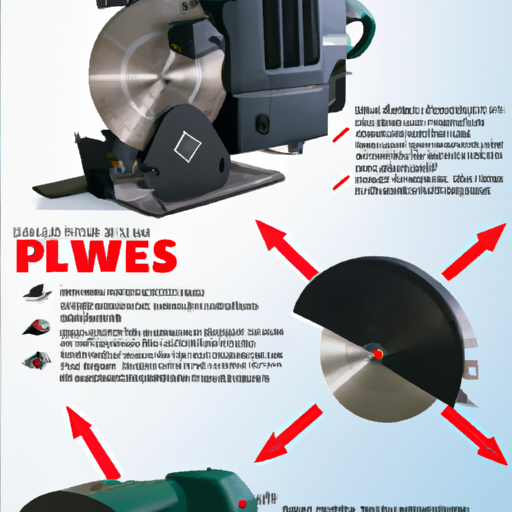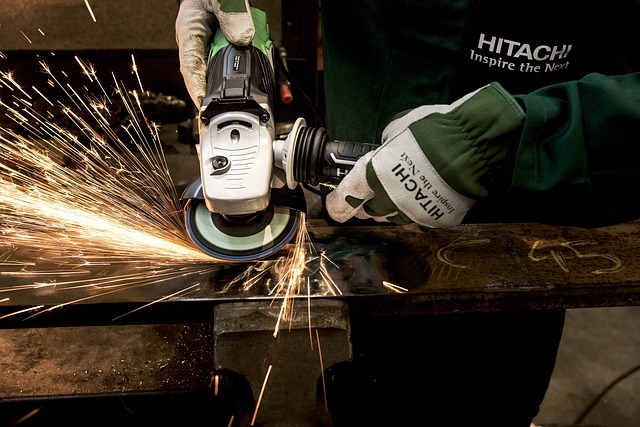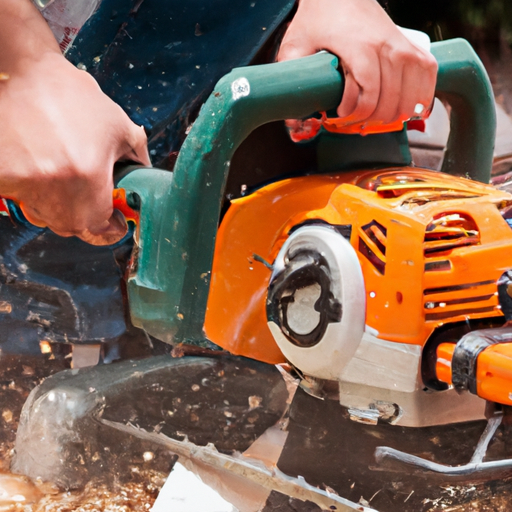Have you ever wondered about the safety precautions you should take when using a battery-powered oscillating tool? Well, we’ve got you covered! In this article, we will discuss the importance of following safety guidelines while using these tools, and provide you with some essential tips to ensure your safety. So, let’s dive in and learn more about content safety precautions when using a battery-powered oscillating tool!
Using an oscillating tool can be so convenient and efficient, but it’s crucial to prioritize safety. One of the most important things to remember is to always read the manufacturer’s instructions before using the tool. This will ensure that you are familiar with the tool’s features and understand how to use it safely. Plus, it’s good practice to wear personal protective equipment such as safety goggles and gloves to protect yourself from any flying debris or sharp edges.
Another vital safety precaution is to make sure that the tool is turned off and the battery is removed or disconnected before performing any maintenance or changing accessories. This will help prevent any accidental startup or injury while working on the tool. Additionally, it’s essential to have a clear workspace and maintain a proper grip on the tool to prevent any slips or accidents.
In our upcoming article, we will delve deeper into important content safety precautions when using a battery-powered oscillating tool. We will discuss topics such as proper handling techniques, avoiding electrical hazards, and maintaining the tool for long-term safety. So, stay tuned, and we’ll provide you with all the necessary information to ensure your safety while using these versatile tools!
What is a Battery-Powered Oscillating Tool?
A battery-powered oscillating tool, also known as a multi-tool, is a versatile and portable tool that is powered by a rechargeable battery. It is designed to perform a wide range of tasks, such as cutting, sanding, scraping, grinding, and polishing.
Definition and function of a battery-powered oscillating tool
A battery-powered oscillating tool is a handheld power tool that operates by rapidly oscillating a flat or round blade, depending on the attachment being used. The oscillating motion allows the tool to make precise cuts and perform various tasks in tight spaces or hard-to-reach areas. It offers users a high level of control and versatility, making it an essential tool for professionals and DIY enthusiasts alike.
Types of tasks that can be performed with a battery-powered oscillating tool
The versatility of a battery-powered oscillating tool allows it to be used for a wide range of tasks. Some common applications include:
-
Cutting: The tool can be equipped with a cutting blade to make straight or curved cuts in various materials, such as wood, metal, plastic, and drywall. It is especially useful for plunge cuts and making precise cuts in confined spaces.
-
Sanding: With the appropriate sanding attachment, the tool can be used for sanding and refinishing surfaces, removing paint or varnish, and smoothing rough edges.
-
Scraping: The oscillating motion of the tool makes it ideal for scraping off old paint, caulk, or adhesives from surfaces.
-
Grinding and Polishing: By attaching a grinding or polishing pad, the tool can be used for tasks like grinding down rough edges, shaping metal or wood, or polishing surfaces to a smooth finish.
-
Removing Grout: With a specialized grout removal attachment, the tool can efficiently remove old grout from tile surfaces.
Importance of Safety Precautions
When using a battery-powered oscillating tool, it is crucial to prioritize safety precautions to prevent accidents or injuries. Understanding the potential risks involved and adhering to proper safety protocols is essential for a safe and successful working experience.
Understanding the potential risks involved with battery-powered oscillating tools
Although a battery-powered oscillating tool is a relatively safe tool to use, it is important to be aware of the potential risks associated with its operation. Some risks include:
-
Cuts and abrasions: The sharp blades and fast oscillating motion of the tool can cause cuts and abrasions if not used properly or if the user comes into contact with the blade.
-
Eye injuries: Dust, debris, and flying particles can pose a risk to the eyes when using the tool. Without proper eye protection, there is a chance of injury or even permanent damage.
-
Hand and finger injuries: Incorrect handling or gripping of the tool can lead to hand and finger injuries, including cuts, scrapes, and pinches.
-
Hearing damage: The high-frequency noise generated by the tool can cause hearing damage if the user does not wear proper hearing protection.
Consequences of neglecting safety precautions
Neglecting safety precautions when using a battery-powered oscillating tool can have severe consequences. Some of the consequences include:
-
Personal injuries: Neglecting safety precautions can result in injuries, such as cuts, abrasions, burns, or even amputations. These injuries can range from mild to severe and may require medical attention, leading to time off work or even permanent disability.
-
Damage to property: Using the tool without following safety protocols can lead to accidental damage to materials, surfaces, or even the tool itself. This can result in additional costs for repairs or replacements.
-
Legal and ethical responsibilities of users
As users of battery-powered oscillating tools, we have legal and ethical responsibilities to ensure our safety and the safety of those around us. It is essential to follow all safety guidelines and regulations set by the manufacturer and relevant authorities. By doing so, we can prevent accidents, protect ourselves and others from harm, and uphold our ethical obligation to prioritize safety.
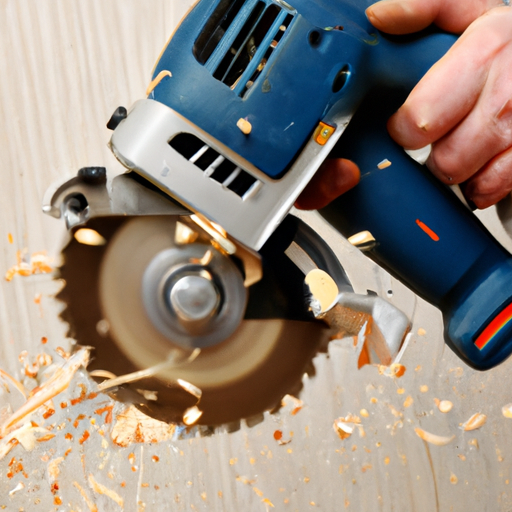
Personal Protective Equipment (PPE)
Personal Protective Equipment, often abbreviated as PPE, plays a crucial role in ensuring the safety of individuals using a battery-powered oscillating tool. Understanding the essential PPE and wearing it correctly is vital for minimizing the risk of injuries.
Essential PPE required for using a battery-powered oscillating tool
When using a battery-powered oscillating tool, the following Personal Protective Equipment is essential:
-
Eye Protection: Safety goggles or glasses with impact-resistant lenses should always be worn to protect the eyes from flying debris, dust, and particles that can be generated during use.
-
Gloves: Wearing gloves can protect the hands from cuts, abrasions, and potential contact with hot surfaces or materials.
-
Hearing Protection: The high-frequency noise generated by the tool can be damaging to hearing. Wearing earmuffs or earplugs can help protect against hearing loss.
-
Respiratory Protection: Depending on the task being performed, a mask or respirator may be necessary to protect against inhalation of dust, fumes, or other harmful particles.
Choosing the right eye protection
When choosing eye protection for use with a battery-powered oscillating tool, it is important to select goggles or glasses that meet the appropriate safety standards. Look for the ANSI Z87.1 certification, which ensures that the eyewear provides the necessary impact resistance and protection against flying debris.
Importance of wearing gloves and hearing protection
Gloves are an essential part of PPE when using a battery-powered oscillating tool because they provide protection against cuts, abrasions, and potential contact with hot surfaces or materials. Additionally, wearing hearing protection, such as earmuffs or earplugs, is crucial to prevent hearing damage caused by prolonged exposure to high-frequency noise.
Safety footwear recommendations
While not directly related to the use of a battery-powered oscillating tool, wearing appropriate safety footwear is highly recommended to minimize the risk of foot injuries. Steel-toed boots or shoes with slip-resistant soles can help protect the feet from falling objects, sharp debris, or accidental contact with the tool.
Tool Inspection and Maintenance
Before using a battery-powered oscillating tool, it is essential to inspect the tool for any damage or defects. Regular tool inspection, maintenance, and proper cleaning can significantly contribute to the tool’s performance and ensure safe operation.
Checking for any damage or defects before use
Before using a battery-powered oscillating tool, inspect the tool thoroughly for any visible damage, defects, or signs of wear and tear. Check the power cord, battery, and any other components for cuts, frayed wires, or loose connections. If any damage is found, the tool should not be used and should be repaired or replaced before further use.
Cleaning and lubricating the oscillating tool regularly
Regular cleaning of the tool is important to remove any debris, dust, or particles that may accumulate during use. Use a brush or compressed air to clean the tool thoroughly, paying particular attention to the blade area and any crevices where debris may collect. Lubrication of moving parts, such as the blade attachment mechanism, should also be done regularly using the manufacturer’s recommended lubricant.
Replacing worn-out parts and batteries
Over time, the blade and other parts of the oscillating tool may become worn or damaged. It is crucial to replace these parts with genuine manufacturer replacements to ensure safe and efficient operation. Additionally, batteries should be regularly inspected for any signs of damage or decreased performance and replaced if necessary.
Safe storage and transportation practices
When not in use, the battery-powered oscillating tool should be stored in a clean, dry, and secure location away from children and pets. Ensure that the tool is properly stored to prevent accidental damage or unintentional use. When transporting the tool, ensure that it is properly secured and protected to prevent any potential damage to the tool or other objects.
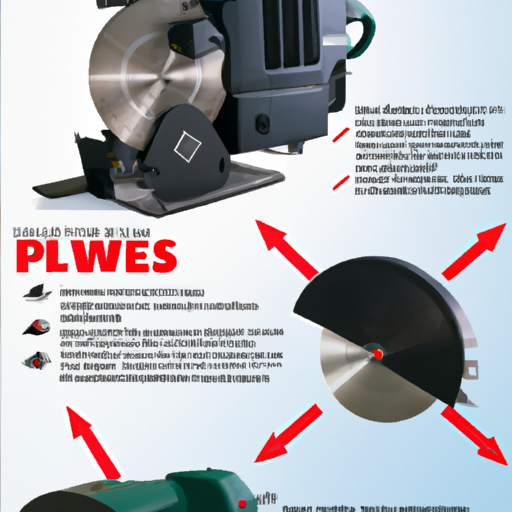
Work Area Preparation
Proper work area preparation is essential for safe and efficient use of a battery-powered oscillating tool. Creating a clutter-free workspace, ensuring adequate lighting and ventilation, and securing work materials and surfaces are crucial steps to minimize the risk of accidents or injuries.
Creating a clutter-free workspace
Before using the oscillating tool, ensure that the work area is clear of clutter, debris, and any unnecessary objects. This allows for better maneuverability of the tool and reduces the risk of tripping hazards.
Ensuring adequate lighting and ventilation
Adequate lighting is essential for maintaining good visibility and preventing accidents. Ensure that the work area is well-lit, and use additional task lighting if necessary. Additionally, proper ventilation is important, especially when performing tasks that generate dust, fumes, or other airborne particles. If working in a confined space, consider using a dust collection system or wearing respiratory protection.
Securing work materials and surfaces
Before starting any task with the oscillating tool, ensure that the workpiece or material is securely stabilized. This can be achieved by clamping the material or using other appropriate securing methods. A stable workpiece reduces the risk of the tool slipping or the material moving unexpectedly during use, preventing potential injuries or damage.
Proper Tool Handling
Proper tool handling is crucial for safe and effective use of a battery-powered oscillating tool. Correct hand placement and grip techniques, avoiding accidental activation of the tool, and maintaining control and stability during operation are important aspects to consider.
Correct hand placement and grip techniques
When using a battery-powered oscillating tool, ensure that the hands are placed firmly on the tool, maintaining a secure grip. The dominant hand should grip the handle, while the other hand provides additional support and stability. Avoid placing fingers or hands near the blade or in the path of the oscillating motion to prevent injuries.
Avoiding accidental activation of the oscillating tool
Before changing attachments or performing any adjustments, always ensure that the tool is turned off and the battery is removed or disconnected. This helps to prevent accidental activation and ensures complete safety when making any changes to the tool.
Maintaining control and stability during operation
During operation, it is essential to maintain control and stability of the tool. Avoid excessive force or pushing the tool beyond its capabilities, as this may result in loss of control or the tool kicking back. Keep a firm grip on the tool, use smooth and controlled motions, and let the tool do the work without forcing it.
Safe Operating Procedures
Using a battery-powered oscillating tool safely involves following proper operating procedures as outlined by the manufacturer. Reading and understanding the manufacturer’s instructions, recognizing the limitations and capabilities of the tool, using appropriate accessories and attachments, and employing safe cutting, sanding, or scraping techniques are critical for personal safety.
Reading and following the manufacturer’s instructions
Before using a battery-powered oscillating tool, carefully read and understand the manufacturer’s instructions and safety guidelines. Familiarize yourself with the tool’s specific features, functions, and limitations. Following the manufacturer’s instructions ensures optimal performance and helps prevent accidents or damage.
Understanding the limitations and capabilities of the tool
While a battery-powered oscillating tool is versatile, it is important to understand its limitations. Different materials and tasks may require specific attachments or techniques. It is essential to use the tool within its capabilities and avoid pushing it beyond its limits. This helps maintain control and prevent accidents or tool damage.
Using the appropriate accessories and attachments
Each task requires the appropriate attachment or accessory to ensure safe and efficient operation. Always use the recommended attachment for the task at hand and securely fasten it to the tool according to the manufacturer’s instructions. Using the wrong attachments or improperly attaching them can result in poor performance, increased risk of accidents, or damage to the tool.
Safe cutting, sanding, or scraping techniques
When performing cutting, sanding, or scraping tasks, it is important to use the tool correctly to minimize the risk of injury or damage. Allow the oscillating motion of the tool to do the work, applying minimal pressure and avoiding excessive force. Maintain a stable position, use smooth and controlled motions, and avoid reaching or overextending.
Avoiding Electrical Hazards
Since battery-powered oscillating tools require electricity to charge their batteries, it is essential to be aware of and avoid electrical hazards. Using the tool in dry conditions, inspecting the power cord and charger for damages, and avoiding contact with water or other liquids are key safety precautions.
Using a battery-powered oscillating tool in dry conditions
Electricity and water do not mix, so it is crucial to ensure that the tool and work area are dry when using a battery-powered oscillating tool. Avoid using the tool in wet or damp conditions, and always keep the electrical components away from any sources of water or moisture.
Inspecting the power cord and charger for damages
Before charging or using the battery-powered oscillating tool, inspect the power cord and charger for any signs of damage or wear. Check for frayed wires, cuts, or exposed metal. If any damage is detected, the tool should not be used, and the power cord or charger should be repaired or replaced.
Avoiding contact with water or other liquids
Water is a conductor of electricity, so it is important to avoid any contact between the tool and water or other liquids. Never operate the tool with wet hands, and ensure that the tool and work area are dry before use. If necessary, use appropriate measures, such as a ground fault circuit interrupter (GFCI), to prevent electrical shock in wet or damp environments.
Emergency Preparedness
Being prepared for emergencies is a crucial aspect of using any power tool safely. Knowing the location of emergency stops and switches, having a safety plan in case of accidents or injuries, and contacting emergency services when necessary are essential steps in emergency preparedness.
Knowing the location of emergency stops and switches
Before using a battery-powered oscillating tool, familiarize yourself with the location of emergency stops and switches. In case of an emergency or an urgent need to stop the tool, knowing how to quickly and safely shut off the power can prevent further accidents or injuries.
Having a safety plan in case of accidents or injuries
Accidents or injuries can occur despite following all safety precautions. Having a safety plan in place is essential to respond effectively to emergencies. Always keep a first aid kit nearby, know how to perform basic first aid procedures, and have access to emergency contact numbers. It is also important to inform others in the vicinity about the use of the tool and any potential risks.
Contacting emergency services if necessary
In the event of a serious accident, injury, or any other emergency, do not hesitate to contact emergency services immediately. Time is critical in such situations, and prompt medical attention may be necessary. It is always better to err on the side of caution and seek professional help when needed.
Conclusion
Safety precautions when using a battery-powered oscillating tool are of utmost importance to prevent accidents, injuries, and damage to property. By understanding the potential risks involved, adhering to safety guidelines and wearing the appropriate Personal Protective Equipment, we can ensure our safety and the safety of those around us. Proper tool inspection and maintenance, preparation of the work area, correct tool handling, and following safe operating procedures are crucial for safe and efficient use of the tool. By avoiding electrical hazards, being prepared for emergencies, and contacting emergency services when necessary, we can minimize the risks associated with using a battery-powered oscillating tool. Remember, safety should always be our top priority, and by following these safety precautions, we can enjoy the benefits of using a battery-powered oscillating tool without compromising our well-being.
